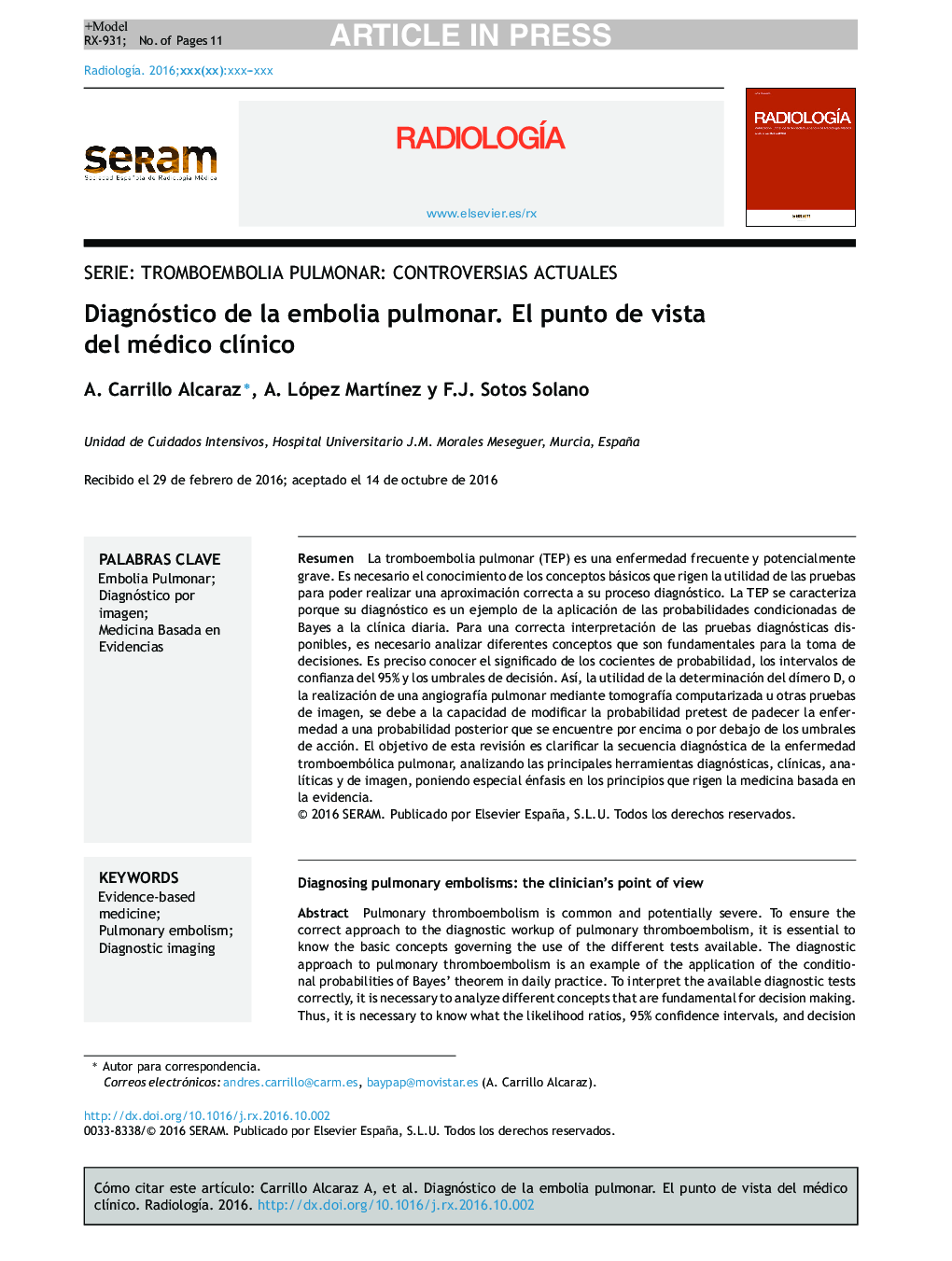| Article ID | Journal | Published Year | Pages | File Type |
|---|---|---|---|---|
| 5728051 | Radiología | 2017 | 11 Pages |
Abstract
Pulmonary thromboembolism is common and potentially severe. To ensure the correct approach to the diagnostic workup of pulmonary thromboembolism, it is essential to know the basic concepts governing the use of the different tests available. The diagnostic approach to pulmonary thromboembolism is an example of the application of the conditional probabilities of Bayes' theorem in daily practice. To interpret the available diagnostic tests correctly, it is necessary to analyze different concepts that are fundamental for decision making. Thus, it is necessary to know what the likelihood ratios, 95% confidence intervals, and decision thresholds mean. Whether to determine the D-dimer concentration or to do CT angiography or other imaging tests depends on their capacity to modify the pretest probability of having the disease to a posttest probability that is higher or lower than the thresholds for action. This review aims to clarify the diagnostic sequence of thromboembolic pulmonary disease, analyzing the main diagnostic tools (clinical examination, laboratory tests, and imaging tests), placing special emphasis on the principles that govern evidence-based medicine.
Keywords
Related Topics
Health Sciences
Medicine and Dentistry
Radiology and Imaging
Authors
A. Carrillo Alcaraz, A. López MartÃnez, F.J. Sotos Solano,
